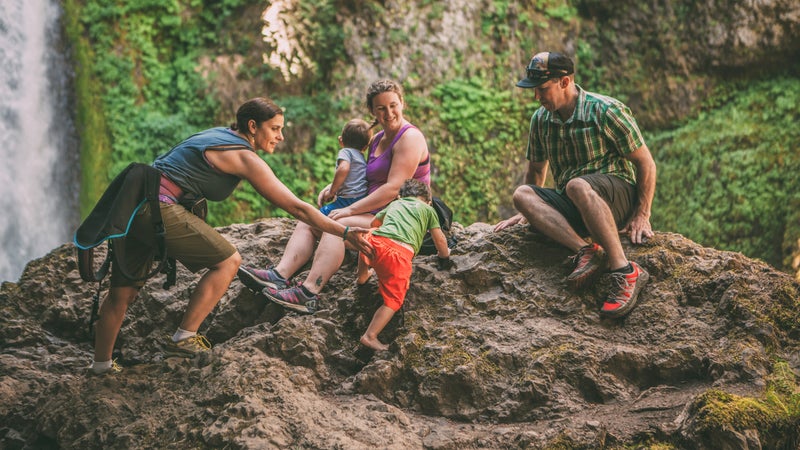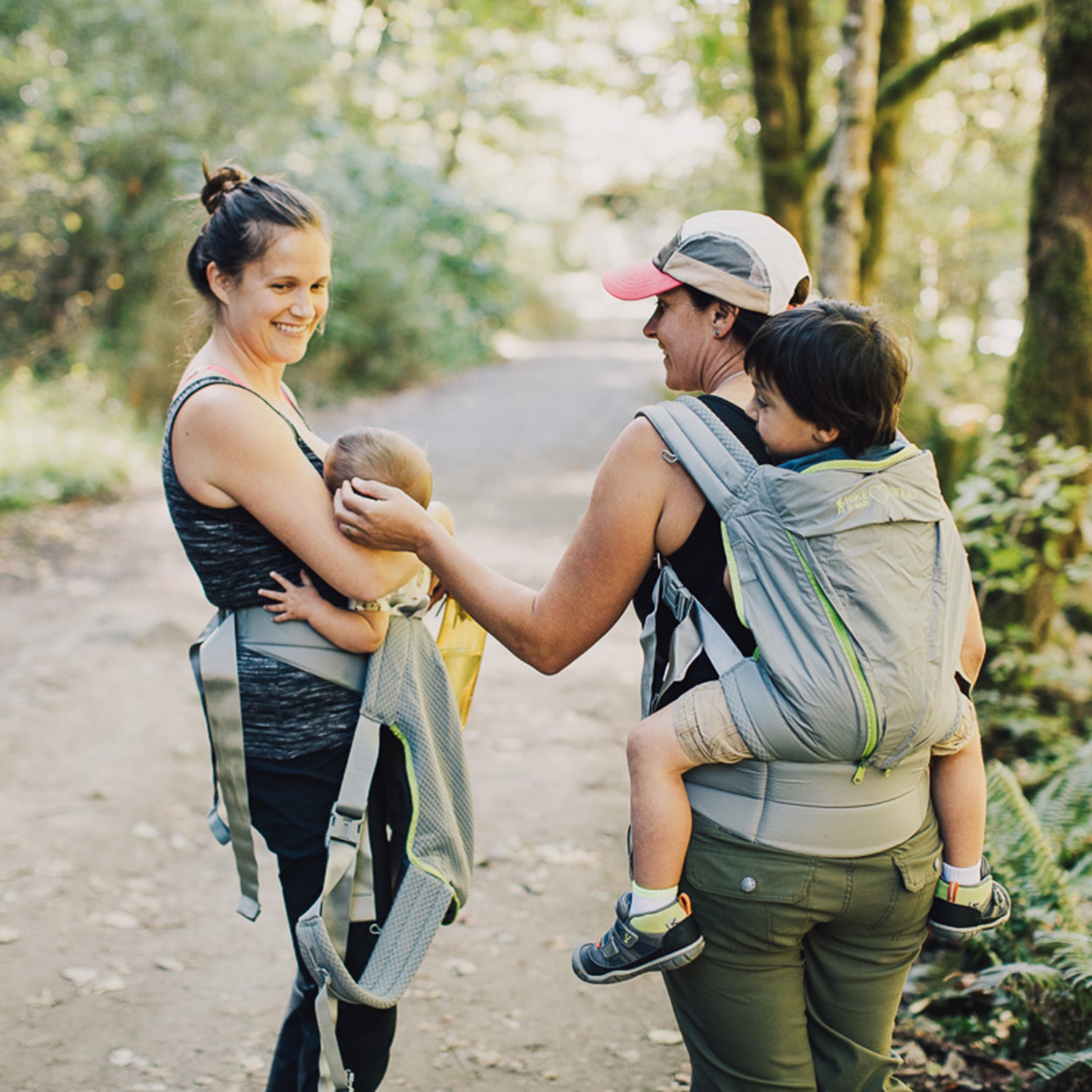When my son Mason was about eight months old, my husband, Mark, and I took him on a trip to Yosemite, 700 miles away from home. We’d been hiking with our son a fair bit up to that point, so we thought we knew what to expect for the all-day hike we had planned. We had a frame carrier and a soft structured carrier, and on that day, my gut told me to bring both.
That was a good call. While the seven-mile out-and-back hike to Vernal Falls is well manicured and packed with tourists, it also features a lot of elevation gain. As we hiked down the mountain with Mason in the frame carrier, he started crying uncontrollably. We assumed he was wet, so we stopped to check him and found he was dry. He’d also been fed recently, so we knew he wasn’t hungry.
After analyzing all the usual options, we realized the sunshade of his frame carrier was acting as a echo chamber, heightening the sound of crashing waterfalls as we walked past. Mason also had recently become aware of depth perception. Being high up on our backs, looking all the way down into Yosemite Valley as we descended the steeper sections of the trail, plus the intensity of the water noise, was scaring him.
Once we realized this, we switched to the soft carrier. I placed Mason on my front, nuzzled up against my breast, and he instantly simmered down and was silent for the remaining two hours of the hike.
The moral of the story here is that it’s important to think outside the box—or the frame—when you have a crying child on the trail. While there are just going to be some days when getting out with a baby or young child is tricky due to teething, tummy aches, poopy pants, and growth spurts, there are other times when a little adjustment can make all the difference. And sometimes adjustment means going shorter distances, looking for hikes with visitor centers so the kids can toddle around looking at books, or opting for a lake or creek if the long trail you planned just isn’t going to happen.
Research has taught us that getting babies and kids outdoors early on is important for healthy growth because of everything—from increased vitamin D to better muscle coordination and problem-solving skills—that comes with negotiating nature. But it’s also easy to just give up when a day isn’t going well. Trust me when I say there have been plenty of times when I thought there was no way a hike was going to happen. I’ve been on hundreds of hikes with Mason, and with young families across the country, since starting the network in 2013. Here’s what I know: If you keep after it and make slight changes to what you had planned in your mind, you’ll never regret it. And you’ll become a better outdoor parent all the time versus braving it only on fair-weather days.

I say all this while recognizing that Mason was born in summer—June 28, to be exact—which makes getting outside easier. Pre-kid, Mark and I were both very outdoorsy, independent people. We didn’t really plan on having a child, and then there we were, in nine short months, wondering when we would ever get to really experience the outdoors again. We didn’t necessarily vocalize our worry over losing our adventure life, but we both knew it was lingering in the room, a little crying white elephant.
Our list of concerns were a mile long in the beginning. What if he didn’t like the car seat and we couldn’t go anywhere? What if he hated the carrier? Would we really be able to do anything with a baby—or would I be too nervous about all of “what if” scenarios? I’ve learned a lot since then. Here are a few of the top tips I’d offer parents who are similarly anxious.
Be a Minimalist
New parents often feel like they can’t leave the nursery without packing the entire thing into a stroller and wheeling it around with them. Go light. If you must bring it all, leave it in the car. Most major meltdowns, blowouts, or unexpected bumps can wait to be remedied in the parking lot.
Take Younger Ones Farther
When your baby is little, this is your chance to go for longer hikes. Your child is light and needs little more than milk, maybe a pacifier, an extra diaper (or two), a few wipes, hand sanitizer, and a baggie to pack it out. Because you don’t know how well your child will do with altitude, focus on longer, more scenic hikes. When Mason was little, we used to do a lot of five-mile hikes, and if we really wanted to go for it, we would try six to ten miles at places like Silver Falls, a beautiful loop with gentle up-and-down in Oregon.
Don’t Get Hung Up on Naptime
Babies who are trained to nap in motion from a young age will be easier to evolve into hiking toddlers. While it’s a personal preference for parents, I used Mason’s two naps a day (and more when he was really young) to get my hike on. I would head out and get to the trailhead just before naptime. I’d struggle a bit with a cranky baby as I got him comfortable on me, but once we started walking, he was out and slept for hours. This gave me a lot of freedom to explore and not feel like my wings were clipped.
Change Expectations with Age
One of the trickiest things about going from baby to toddler with little hikers is the independence that rises up when kids start learning to walk. This can frustrate a lot of parents who are used to moving efficiently—everything can come to a screeching halt if you have a child who refuses to stay on the trail or teeters around stuffing rocks into their mouth. The key to toddlerdom is patience and creativity. The great distances you may once have tackled go from miles to meters. This is the time to get more interested in what’s around you instead of the end destination.
Size Up Your Gear
I advise parents who are struggling with a kiddo who won’t get into the pack or carrier to first take a look at their gear. While a carrier might have been amazing for the first 14 months, your little one’s body is growing fast. Even if a carrier says it’s good for your child’s age, he may be uncomfortable or not like the view from the carrier.
Take It Slow
While it’s all trial in the beginning, things will get better if you keep at it. Think ahead and really read your child’s cues. Learn what she likes, keep doing more of that, and push it slowly from there. While it’s tempting to go out the gate strong, remember that your new little person is adjusting to the big world. The gentler you welcome her into the outdoors, the more she’ll develop her own love for it.


